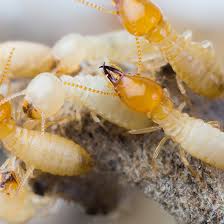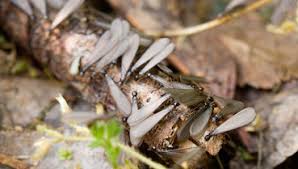
The Single Strategy To Use For Termite Control Rates
Schedorhinotermes intermedius is your 2nd most important termite according to ABIS. Workers build a plaster-like coating above their areas to protect themselves from the surroundings.
Schedorhinotermes intermedius occurs in coastal areas from SE Queensland to south of Sydney. There are several closely related species that occur in different Regions of Australia: S. actuosus, S. breinli, S. derosus, S. seclusus, S. reticulatus (Watch the Pa DIL Australian Biosecurity website for more details)
Fumigatus reside in colonies, nesting in the ground and on wood. They feed on weathered and moist wood, like decking boards on verandas around the outside of homes. They do not attack structural lumber that is sound .
The soldiers are smaller than the workers, having a body around 4mm long. The head is light orange and nasute (pointed snout).
How Termite Control Products Bunning's can Save You Time, Stress, and Money.
Walkeri feeds on decayed and weathered hardwood timber in conditions or connected with the ground. It nests where there is fire or corrosion damage and also builds ball-shaped nests high up in fire-damaged trees. Subterranean tunnels radiate out throughout the floor from the tree. .
Soldiers are smaller than workers. Their body length is 5-7mm, the largest of those Nasutitermes species. The mind is orange and nasute (pointed snout).
Walker happens from coastal areas and the basin in New South Wales and Queensland.
ENTFACT-60 4: Termite Control: Answers for Homeowners   Download PDF  from Michael F. Potter, Extension Entomologist University of Kentucky College of Agriculture The University of Kentuckys Entomology Department receives many calls regarding termites. Subterranean (soil-dwelling) termites are severe pests of buildings and usually warrant attention by an expert. Termite control could be confusing and homeowners frequently have questions.
The 3-Minute Rule for Termite Control Rates
NOTE: Answers given in this novel are based on requirements in Kentucky. However, remedies and termites sometimes vary with locale, so you may also need to consult your local extension service about specific recommendations for your area. Q: Why worry about termites A: Termites cause billions of dollars in damage each year in the U.S.
Termites can injure shrubs and trees, but often are a secondary invader of plants already in decline. While buildings may be infested by termites at any time, they are especially relevant when buying or selling a house since a termite inspection/infestation report is generally a condition of sale. Thousands of termites appearing inside the house are an emotionally stressful experience not to mention the thought of termites quietly feasting on the biggest investment of one.
1: Termites are effective at resisting costly damage.  Q: Why are infestations often found in the spring A: Spring typically is when large numbers of winged termites, called"swarmers," emerge indoors homes. Basically, termites swarm to distribute and start new colonies. Triggered by warmer temperatures and rain, the winged termites fly in the atmosphere and then emerge in the colony.

See This Report on Termite Control Products Bunning's
Winged termites often confuse with rodents, which tend to swarm at the same time of year. Termites have wings of equal dimensions, a thickened waist, and straight antennae. Conversely, ants have elbowed antennae waists, and forewings which are longer than the hind wings. Fig. 3:Â Termite swarmers are usually confused with winged ants.
Out in the yard aren't like this necessarily cause for concern, and do not indicate the house is infested. On the other hand, if swarmers are appearing alongside the base or from abutting patios or porches, there's a possibility. Other signs of infestation are earthen subway tubes stretching over foundation walls, support piers, sill plates, floor joists, etc..
As they travel between the arrangement along with their colonies termites assemble the tubes for shelter. To help determine if an infestation is active, the tubes may be broken open and checked for the presence of little worker termites. It doesn't necessarily signify that the infestation is dormant if a tube happens to be empty; termites abandon sections of tubing.